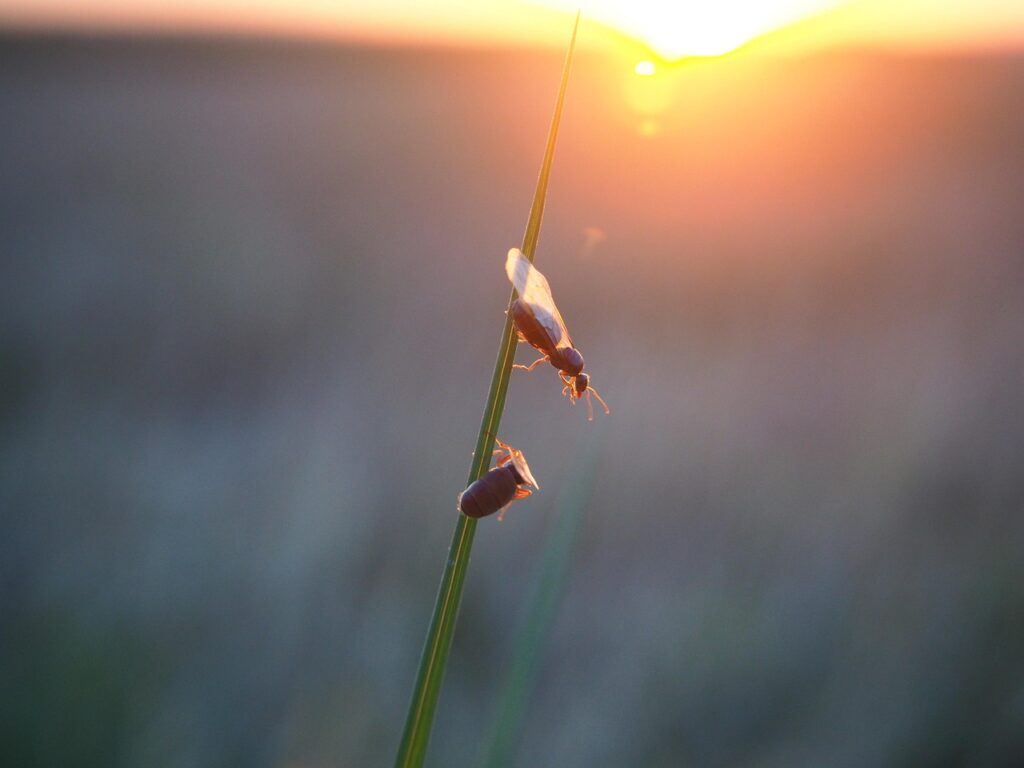
Flying Ants (Alates): The Swarming Spectacle and How to Deal With Them Properly
Table of Contents
- What Are Flying Ants?
- Understanding the Life Cycle of Flying Ants
- When Does Flying Ant Day Happen in the UK?
- Why Spraying Flying Ants Doesn’t Work
- Correctly Identifying the Species Matters
- How to Tackle Flying Ants Effectively
- When to Call a Pest Control Expert
- Conclusion
What Are Flying Ants?
Flying ants—also called alates—are the reproductive members of an ant colony. These include young queens and males that fly during a mass mating ritual known as the nuptial flight.
Unlike worker ants, alates have wings and fly off in large numbers when conditions are right. If you live in Didcot or Wallingford, you’ve probably seen this summertime event near your home or garden.
Understanding the Life Cycle of Flying Ants
Effective treatment begins with understanding the ant’s development cycle:
- Eggs: Queens lay thousands of eggs, most of which become worker ants.
- Larvae and Pupae: Eggs develop into larvae, then pupae.
- Workers: These sterile females forage and maintain the nest.
- Alates: Winged males and queens emerge from mature colonies.
- Nuptial Flight: Alates mate mid-air. Males die; fertilised queens drop to the ground and shed their wings.
- New Colonies: A queen starts a new colony, repeating the cycle.
That sudden swarm you see in July? It’s not random—it’s highly coordinated ant courtship behaviour.
When Does Flying Ant Day Happen in the UK?
Flying Ant Day can occur anytime from late June to early August, depending on weather conditions. It often follows a warm rain shower with high humidity.
This phenomenon usually lasts a few hours but may repeat over several days. In places like Wallingford and Didcot, swarming activity is particularly noticeable in urban gardens and patios.
Why Spraying Flying Ants Doesn’t Work
Spraying flying ants rarely solves the problem. Here’s why:
- Short Lifespan: Males die shortly after mating, and queens disappear underground. Killing them mid-flight achieves little.
- Hidden Nests: Flying ants emerge from deep nests—often beneath paving or inside wall cavities. Sprays don’t reach the source.
- New Colonies Form Constantly: One swarm may produce dozens of queens. If you treat one flight, others may have already landed and started new nests.
Need proven pest prevention advice? Read more on our Shire Pest Solutions blog.
Correctly Identifying the Species Matters
Most UK flying ants are harmless black garden ants (Lasius niger), but other species can cause structural issues or infest indoor spaces. Mistaking flying ants for termites—or misidentifying the species—leads to the wrong treatment.
If you’re unsure, capture a few specimens or take a photo. A trained technician can identify the species quickly and accurately.
How to Tackle Flying Ants Effectively
Here are simple but effective steps:
- Locate the Nest: Look for ant trails, disturbed soil, or movement near doorways and skirting boards.
- Use Bait Stations: Ant gel bait works better than sprays. Workers carry it back to the nest, which eliminates the colony at the source.
- Seal Entry Points: Block gaps in masonry, window frames, and doors with sealant or mesh.
- Maintain Clean Outdoor Areas: Remove food and drink waste during summer months to reduce attraction.
When to Call a Pest Control Expert
Contact a professional if you notice:
- Recurring flying ant swarms near your property
- Regular ant trails indoors
- Ants emerging from interior walls or flooring
- Visible nests near high-traffic or food prep areas
Our experts at Shire Pest Solutions offer targeted treatments in Didcot, Wallingford, and across South Oxfordshire. We identify the species, locate the nest, and apply safe, professional-grade treatments with long-term prevention plans.
Conclusion
Flying ants may be fascinating, but their swarms can become an annual nuisance without the right approach. Instead of spraying what you can see, focus on eliminating the colony and blocking future access.
If you’re tired of dealing with flying ants, let Shire Pest Solutions help. We provide expert, local support with safe and effective pest control solutions.
🕵️♂️ Need help identifying or treating flying ants? Get in touch with us today for professional support and long-lasting results.
